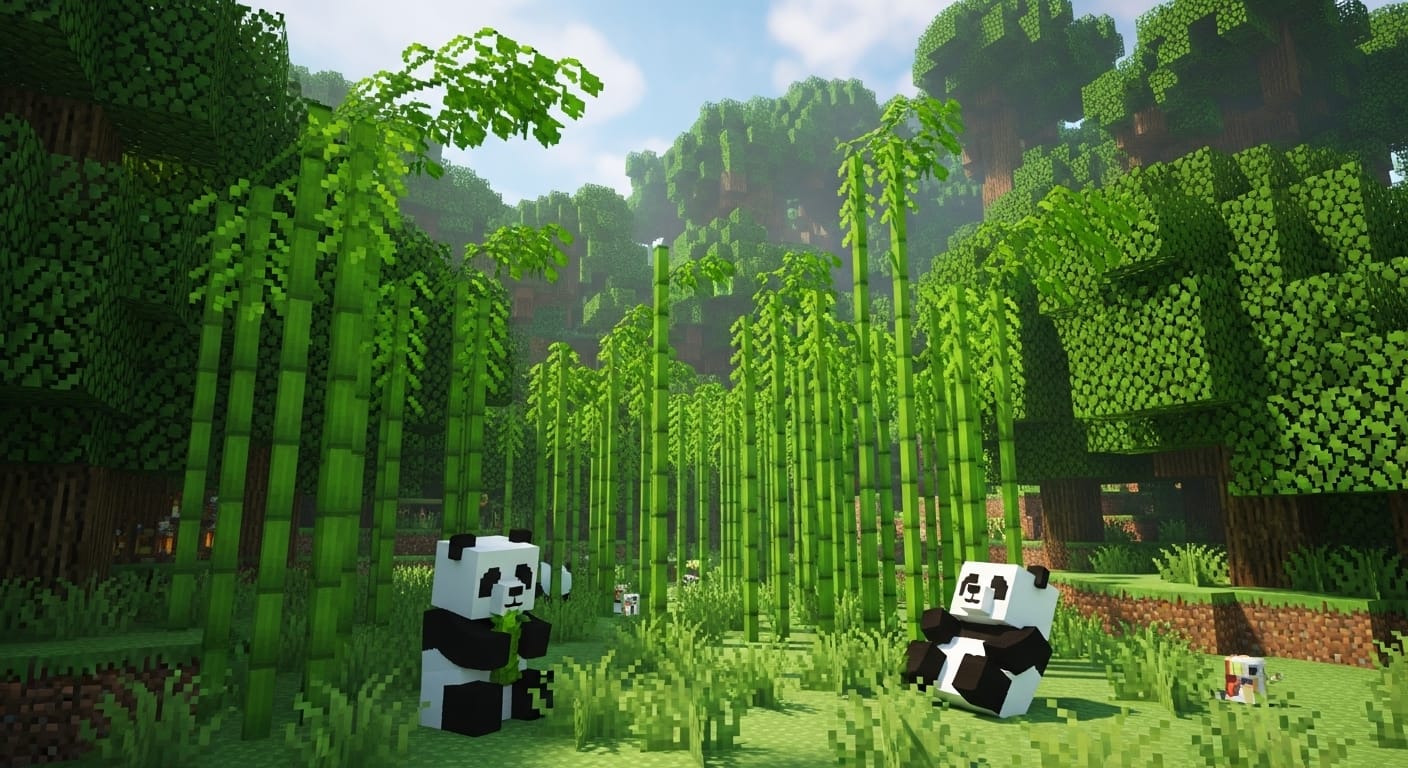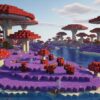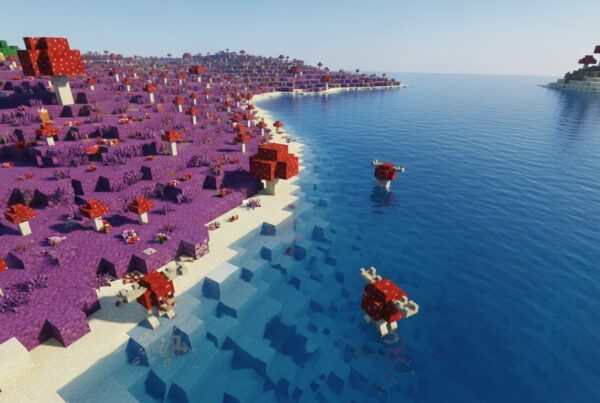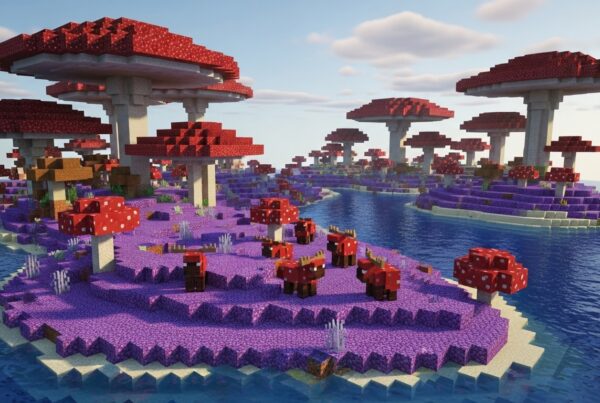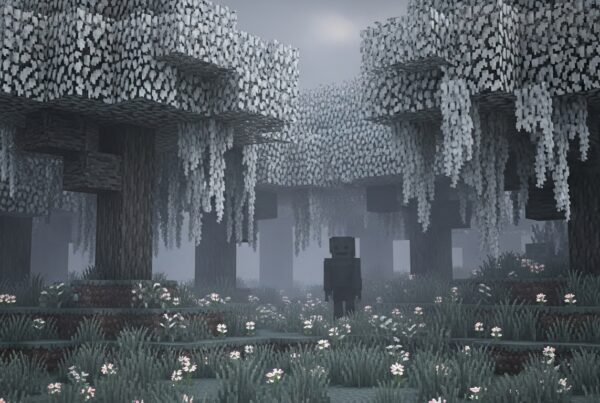Overview
The Bamboo Jungle Biome is a lush and vibrant variant of the Jungle biome, distinguished by its towering bamboo stalks, dense vegetation, and exclusive panda population.
Introduced in Minecraft Java Edition 1.14 (Village & Pillage Update), this biome combines tropical richness with a peaceful, natural feel. Its thick clusters of bamboo and scattered jungle trees create one of the most distinctive landscapes in the game.
Although it shares the green canopy and warm climate of the Jungle biome, the Bamboo Jungle stands out for its rarity—it generates less frequently and in smaller patches, often nestled within or beside regular Jungle regions.
Generation
Bamboo Jungles generate as a sub-biome of the Jungle, typically appearing as small patches or large groves within the main jungle region.
They most often border Jungle, Jungle Hills, or River biomes. The terrain features gentle slopes, rich vegetation, and scattered water pools.
Variants
- Bamboo Jungle – the standard, relatively flat form, containing moderate jungle tree cover and dense bamboo.
- Bamboo Jungle Hills – a steeper variant with more elevation and thicker clusters of bamboo, offering scenic views but harder traversal.
Rarity
- This biome is considered uncommon and can be difficult to locate naturally.
- Players can use the
/locate biome minecraft:bamboo_junglecommand (Java Edition) to find one, or search visually for tall, green bamboo stands visible from treetops.
Edition Differences
- Java Edition: Jungle temples can generate here, and cocoa pods may appear occasionally on jungle trees.
- Bedrock Edition: Temples and cocoa pods are less common or may not generate in Bamboo Jungle variants.
The biome features a warm, humid climate with frequent rainfall, lush green foliage, and a temperature of 0.95 (same as standard Jungles).
Surface Features
The Bamboo Jungle’s surface is composed mainly of grass blocks and dirt, with occasional podzol patches beneath jungle trees.
Thick stands of bamboo dominate the terrain, often reaching heights of 12 – 16 blocks, while jungle trees, melons, vines, and tall grass fill the undergrowth.
Surface details include:
- Bamboo clusters: Grow densely, forming large groves that can reduce visibility and movement speed.
- Vines: Hang from tall trees and cliffsides, useful for climbing or decoration.
- Melons: Naturally spawn on the ground and can be harvested for food.
- Cocoa pods: May appear on jungle trees (Java only).
- Structures: Jungle temples rarely appear in Java Edition but are typically absent in Bedrock.
Flora and Fauna
Flora
- Bamboo: The biome’s signature plant. Harvested for scaffolding, sticks, fuel, and bamboo blocks (post-1.20 update).
- Jungle Trees: Source of jungle logs and cocoa beans (Java only).
- Melons: Provide renewable food and seeds for farming.
- Podzol patches: Allow unique plants like mushrooms to spawn in dim light.
Fauna
- Pandas: Exclusive to this biome. They exhibit multiple personalities—lazy, playful, worried, aggressive, and more.
- Pandas spawn more frequently here than in any other biome.
- They require at least eight bamboo blocks within five blocks’ radius to breed.
- Known for rolling, sneezing, and other unique behaviors.
- Parrots: Spawn among jungle trees, can be tamed with seeds, and mimic mob sounds.
- Ocelots: Shy jungle cats that spawn in low light and can be tamed with fish.
- Chickens: Common passive mob that can appear in lush biomes.
Climate and Environment
- Temperature: 0.95 – 1.0 (warm, humid).
- Weather: Frequent rainfall and occasional thunderstorms.
- Color Palette: Deep, saturated greens; dense foliage with vivid leaves.
- Soundscape: Jungle ambiance—birds chirping, leaf rustling, and occasional panda noises.
- Visibility: Thick bamboo clusters and large trees make exploration difficult, increasing the chance of mob encounters.
Resources
The Bamboo Jungle is rich in renewable resources useful for both survival and building:
- Bamboo: Primary material for scaffolding, sticks, fuel, and decorative blocks.
- Jungle Logs: For crafting, wood planks, and building materials.
- Melons: Food source; can be crafted into glistering melon slices.
- Cocoa Beans: For brown dye and cookies (Java only).
- Podzol: Allows farming of mushrooms or ferns in low light.
- Temple Loot (Java): May include gold ingots, bones, enchanted books, and emeralds.
Because bamboo grows very quickly (up to one block every 3 – 4 minutes), the biome is ideal for automatic bamboo farms and XP-efficient fuel sources.
Gameplay and Exploration
Exploring the Bamboo Jungle offers both beauty and challenge:
- Traversal Difficulty: Dense bamboo and trees restrict movement and visibility; cutting paths or using scaffolding helps.
- Mob Encounters: Limited visibility allows hostile mobs to spawn nearby at night or in shaded groves.
- Navigation Tips:
- Bring shears or axes to clear bamboo.
- Use boats on rivers cutting through jungles for safer travel.
- Place torches liberally to prevent surprise mob spawns.
- Building Opportunities: Popular biome for panda sanctuaries, bamboo farms, or tropical bases.
- Survival Strategy: Abundant bamboo provides early-game tools and easy renewable fuel.
Trivia
- Introduced in Java 1.14 / Bedrock 1.8 (Village & Pillage Update) alongside pandas.
- Bamboo jungles are one of only a few biomes featuring a mob exclusive to it (pandas).
- The biome replaced or co-exists with older Jungle Edge and Jungle Hills regions in world generation.
- Bamboo blocks and planks (added in 1.20) expand the biome’s building potential.
- Bamboo can also be found in shipwreck chests, but Bamboo Jungles remain its only natural large-scale source.
- In real-world inspiration, this biome resembles Asian tropical bamboo forests, reflected in the panda habitat theme.
See Also
- [Jungle Biome]
- [Badlands Biome (Formerly Mesa)]
- [Pandas]
- [Bamboo]
- [Bamboo Blocks]
